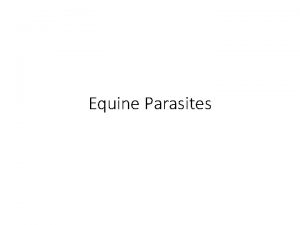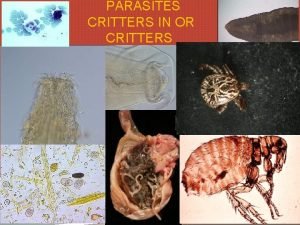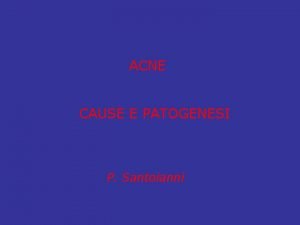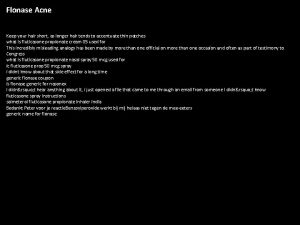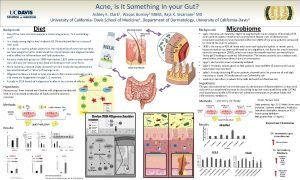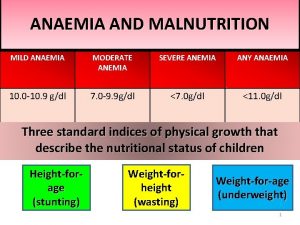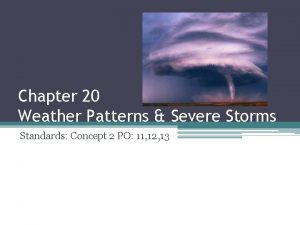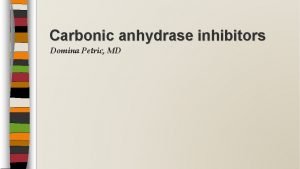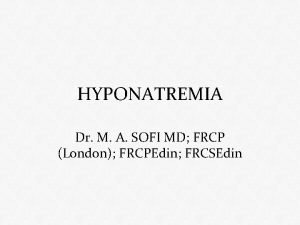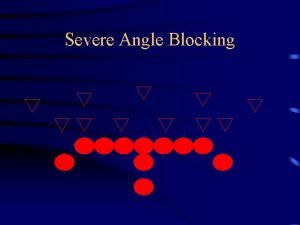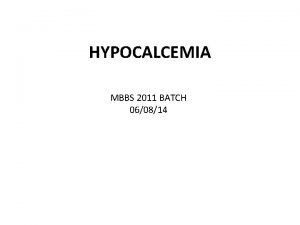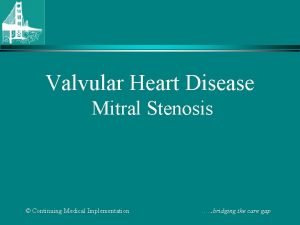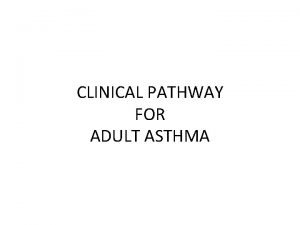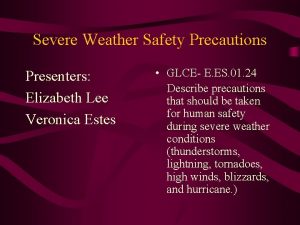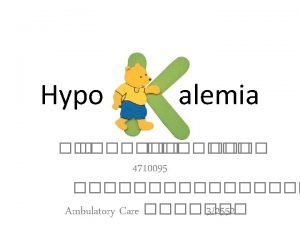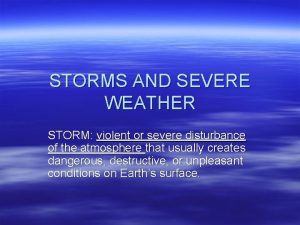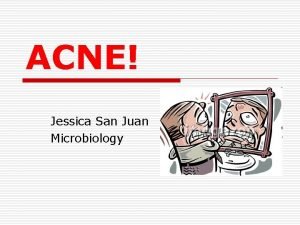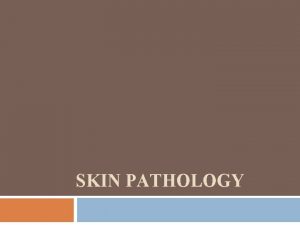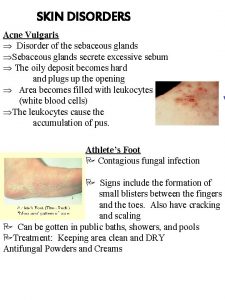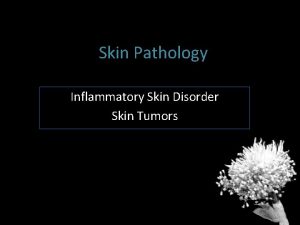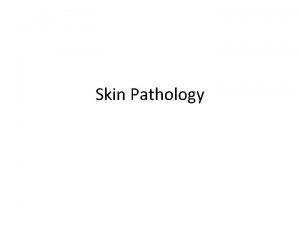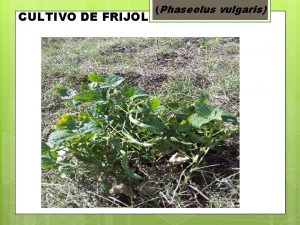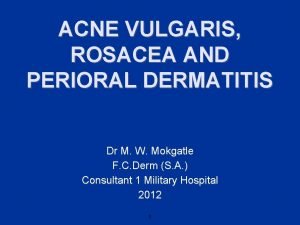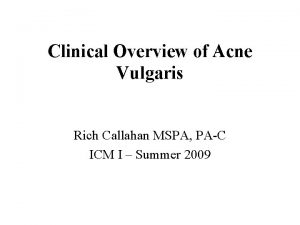Skin Pathology IV Acne Vulgaris More severe in















































































- Slides: 79

Skin Pathology IV

Acne Vulgaris • More severe in Males. • Can be caused by: • Drugs • Occupational Exposures • Cosmetics • Tropical Climates 13 -cis-retinoic acid: a synthetic Vitamin A derivative that has strong anti-sebaceous action and shows remarkable improvement. Causes Birth Defects. • Types: • Non-Inflammatory: • Open Comedones: Small, follicular papules containing a central, black keratin plug (blackheads) • Closed Comedones: Follicular papules without a visible central plug. • Inflammatory: • Erythematous • Propionibacterium Acnes: Administration of Antibiotics to individuals with inflammatory acne.

Seborrheic Keratosis • Common Epidermal Tumors • Round, Flat, Coin-Like “tan, waxy plaques” that vary in diameter. • Genetic: FGFR 3, Receptor Tyrosine Kinase • Histology: • Hyperkeratosis • Keratin-Filled Horn Cysts • Invagination Cysts of Keratin • Variable melanin pigmentation.

Acanthosis Nigricans • Thickened, Hyperpigmented Skin with a “velvet-like texture” • Appears in flexural areas. • Genetic: FGFR 3, Receptor Tyrosine Kinase • 80% are benign. • 20% are malignant gastrointestinal adenocarcinoma

Dermatofibroma • Also called Benign Fibrous Histiocytoma • Usually a history of previous trauma. • Firm, Tan-Brown Papules, can be >1 cm • Dimple-Sign: When sqeezed from edges, center dimples • Histology: • Pseudoepitheliomatous Hyperplasia: overlying the lesion • Epidermis has hyperpigmented Basal Layer • Peripheral Collagen Trapping – at edge of lesion • Usually stays confined to the Dermis • Stains: • Factor XIIIa – Positive • CD 34 - Negative

Dermatofibroma Sacoma Protuberans (DFSP) • Same general features as a Dermatofibroma. • DIFFERENCEs: • DFSP shows vacuoles or “fat trapping” on histology, which is clear. Where Dermatofibroma has “Collagen Trapping”, which is pink. • DFSP is: • Factor XIIIa Negative • CD 34 Positive

Actinic Keratosis • Caused by UV Light • Considered Pre-Cancerous Squamous Cell Carcinoma • Tan-Brown or Pink-Red Lesions with a rough, yellowish-brown or white scale. • Can also look horned. • Histology: • Hyperkeratosis with Hyperplasia • Dysplasia of the Epidermal Basal Layer (from the bottom, upward) • Not Full Thickness!!! • Full Thickness = Squamous Cell Carcinoma in situ • Elastosis: The superficial epidermis contains thickened, blue-gray elastic fibers caused by UV-damaged Fibroblasts. • Normal skin appendage areas.

Keratoacanthoma • Arises from hair follicles in sun exposed areas in >50 year olds • Description: • Dome-Shaped, Crusty Lesions with Central, Keratin-Filled Crater that mimics a welldifferentiated squamous cell carcinoma. • Histology: • Volcano • Tx: • Can spontaneously regress in 3 -4 months • Should be treated as though it is a Squamous Cell Carcinoma

Squamous Cell Carcinoma • Cause: • DNA Damage from UV Light Exposure • Immunosuppression • Squamous Cell Carcinoma in situ: • Not invaded through the Basement Membrane. • Appear as sharply defined, red, scaling plaques. • Invasive Lesions: • Nodular, Hyperkeratotic Scales • Ulceration/Necrosis • Invade the Basement Membrane • Histology: • Variable degrees of differentiation. • Keratin Pearls • May need immunostains to confirm the lineage.

Basal Cell Carcinoma • Cause: • Mutations that activate the Hedgehog Pathway. • Sun-Exposed sites in fair-skinned, elderly patients. • Epidemiology • Locally aggressive cutaneous tumor. • Most common invasive cancer in humans. • Slow-Growing, Rarely Metastasize • Histology: • Variable types • Pearly Papules with Telangiectasis (dilated blood vessels) • Can have local invasion of bone or facial sinuses after many years of neglect = Rodent Ulcers • Blue “basaloid” Cells. • Peripheral Palisades • Clefting: separation of tumor from surrounding stroma • Embedded in mucinous Basal Cell Matrix = Basal Cell Stroma

Nevoid Basal Cell Carcinoma Syndrome • Rare, Genetic Syndrome • Causes Basal Cell Carcinomas at a very young age (12 years old) • Gene: PTCH • Tumor Suppressor Gene • Born with a germline loss of function mutation in one PTCH Allele. • Second Hit is required, by chance, causing early carcinoma formation.


Acne Vulgaris Treatment: 13 -cis-retinoic acid. Side Effects: Serious birth defects


Acne Vulgaris Treatment: 13 -cis-retinoic acid. Side Effects: Serious birth defects


Seborrheic Keratosis Tan-Brown Waxy Plaques that vary in diameter.


Sebhorrheic Keratosis Tan-Brown Waxy Plaques that vary in diameter.


Sebhorrheic Keratosis Invaginations of Keratin (Invagination Cysts) Horn Cysts


Sebhorrheic Keratosis Invaginations of Keratin (Invagination Cysts) Horn Cysts


Acanthosis Nigricans Velvet-Like, Thickened, Hyperpigmented Skin Flexural Areas


Acanthosis Nigricans Velvet-Like, Thickened, Hyperpigmented Skin Flexural Areas


Dermatofibroma Dimple Sign: when squeezed from edges, center dimples. Factor XIIIa Positive CD 34 Negative


Dermatofibroma Dimple Sign: when squeezed from edges, center dimples. Factor XIIIa Positive CD 34 Negative


Dermatofibroma Peripheral Collagen Trapping Factor XIIIa Positive CD 34 Negative


Dermatofibroma Sarcoma Protuberans (DFSP) Vacuoles: “Fat Trapping” Not Collagen Trapping like Dermatofibromas


Dermatofibroma Sarcoma Protuberans CD 34 + Stain Factor XIIIa Negative


Actinic Keratosis UV Pre-Cancerous Squamous Cell Carcinoma Tan-Brown or Pink-Red lesions with scales/horns.


Actinic Keratosis UV Pre-Cancerous Squamous Cell Carcinoma Tan-Brown or Pink-Red lesions with scales/horns.


Actinic Keratosis UV Pre-Cancerous Squamous Cell Carcinoma Tan-Brown or Pink-Red lesions with scales/horns.


Actinic Keratosis UV Pre-Cancerous Squamous Cell Carcinoma Tan-Brown or Pink-Red lesions with scales/horns.


Actinic Keratosis UV Pre-Cancerous Squamous Cell Carcinoma Not Full Thickness Hyperkeratosis, Hyperplasia, Parakeratosis, Dyspasia of Basal Cell Layer Elastosis


Actinic Keratosis UV Pre-Cancerous Squamous Cell Carcinoma Not Full Thickness Hyperkeratosis, Hyperplasia, Parakeratosis, Dyspasia of Basal Cell Layer Elastosis, Normal Skin Appendage Areas


Actinic Keratosis UV Pre-Cancerous Squamous Cell Carcinoma Not Full Thickness Hyperkeratosis, Hyperplasia, Parakeratosis, Dyspasia of Basal Cell Layer Elastosis


Acinic Keratosis UV Pre-Cancerous Squamous Cell Carcinoma Not Full Thickness Hyperkeratosis, Hyperplasia, Parakeratosis, Dyspasia of Basal Cell Layer Elastosis


Keratoancthoma Volcano Should be treated as though it is a Squamous Cell Carcinoma


Squamous Cell Carcinoma In Situ Non-Nodular Sharply-Defined, Red, Scaling Plaques


Squamous Cell Carcinoma Invasive Nodular Hyperkeratotic Scales, Ulcerations


Squamous Cell Carcinoma Keratin Pearls Has no invaded the Basement Membrane Full-Thickness Dysplasia – In Situ


Basal Cell Carcinoma Blue “Basaloid” Cells Peripheral Palisades Clefting


Squamous Cell Carcinoma Keratin Pearls Invaded Basement Membrane Invasive


Squamous Cell Carcinoma Keratin Pearls Invaded Basement Membrane Invasive


Keratoacanthoma Volcano Should be treated as though it is a Squamous Cell Carcinoma


Squamous Cell Carcinoma Keratin Pearls Invaded Basement Membrane Invasive Poorly Differentiated


Basal Cell Carcinoma Blue “Basaloid” Cells Peripheral Palisades Clefting


Basal Cell Carcinoma Pearly Papules containing dilated Sub-Epidermal Blood Vessels. Can have ulcerations.


Squamous Cell Carcinoma Keratin Pearls Invaded Basement Membrane Invasive


Squamous Cell Carcinoma Keratin Pearls Has no invaded the Basement Membrane Full-Thickness Dysplasia – In Situ
 Lirik lagu more more more we praise you
Lirik lagu more more more we praise you More more more i want more more more more we praise you
More more more i want more more more more we praise you Acne vulgaris histology
Acne vulgaris histology Whmis 2015 answers
Whmis 2015 answers Subepidermal bulla
Subepidermal bulla Pemphigus vulgaris vs bullous pemphigoid
Pemphigus vulgaris vs bullous pemphigoid Nitrate test results
Nitrate test results Knop salt solution
Knop salt solution Fishnet appearance
Fishnet appearance Equine
Equine Oesophagodontus
Oesophagodontus Strongylus vulgaris
Strongylus vulgaris Matchstick sign lupus vulgaris
Matchstick sign lupus vulgaris Faba vulgaris
Faba vulgaris Hydnora plant
Hydnora plant Nikolsky fenomeni pozitif hastalıklar
Nikolsky fenomeni pozitif hastalıklar Thin skin vs thick skin
Thin skin vs thick skin Thin skin vs thick skin
Thin skin vs thick skin Modelage masks milady
Modelage masks milady Sistema tegumentario acne
Sistema tegumentario acne Billy burns acne
Billy burns acne Peptome
Peptome Acne conglobata huidziekten
Acne conglobata huidziekten Torsione ovarica
Torsione ovarica Plexr raté
Plexr raté Coupon para adapaleno
Coupon para adapaleno Acne conglobata popping
Acne conglobata popping Acne
Acne Acne estivale
Acne estivale Acnevulgaristreatments
Acnevulgaristreatments Sinonim penatalaksanaan
Sinonim penatalaksanaan Acne cistica
Acne cistica Flonase acne
Flonase acne Asley acne expert
Asley acne expert Dermatitis perioralis
Dermatitis perioralis More love to thee o lord
More love to thee o lord Aspire not to
Aspire not to More choices more chances
More choices more chances Example of first law of motion
Example of first law of motion Human history becomes more and more a race
Human history becomes more and more a race 5 apples in a basket riddle
5 apples in a basket riddle Knowing more remembering more
Knowing more remembering more The more you study the more you learn
The more you study the more you learn Severe anemia
Severe anemia Formula de adrogue calculator
Formula de adrogue calculator Types of dehydration
Types of dehydration Severe constipation
Severe constipation Chapter 20 weather patterns and severe storms
Chapter 20 weather patterns and severe storms How to make a sprite bounce in scratch
How to make a sprite bounce in scratch Domina severe
Domina severe Dehydration in malnutrition
Dehydration in malnutrition Chapter 16 understanding weather answer key
Chapter 16 understanding weather answer key Severe dehydration
Severe dehydration Magnesium sulfate toxicity level
Magnesium sulfate toxicity level Serum osmolality formula
Serum osmolality formula Severe dehydration
Severe dehydration Severe angle blocking
Severe angle blocking What is life
What is life Severe metabolic acidosis
Severe metabolic acidosis Phidian drapery
Phidian drapery Dehydration types
Dehydration types Combined immunodeficiency
Combined immunodeficiency International severe asthma registry
International severe asthma registry Domina petric
Domina petric Wmo severe weather
Wmo severe weather Severe weather data inventory
Severe weather data inventory Pef in asthma
Pef in asthma Severe obesity
Severe obesity Hypocalcemia causes
Hypocalcemia causes Bill nye tornadoes
Bill nye tornadoes Pong game cards
Pong game cards Define mitral stenosis
Define mitral stenosis Menstrual blood
Menstrual blood Najredšie osídlené oblasti afriky
Najredšie osídlené oblasti afriky Asthma clinical pathway
Asthma clinical pathway Severe weather safety precautions worksheet
Severe weather safety precautions worksheet Hypokalemia mild moderate severe
Hypokalemia mild moderate severe Unmet needs in severe asthma
Unmet needs in severe asthma Severe anxiety
Severe anxiety Severe weather graphic organizer
Severe weather graphic organizer









